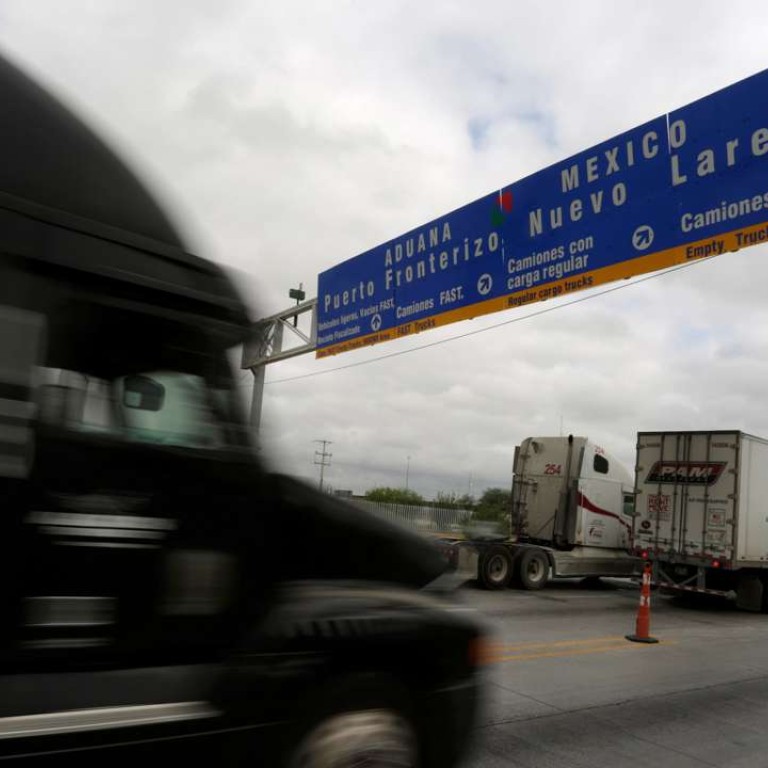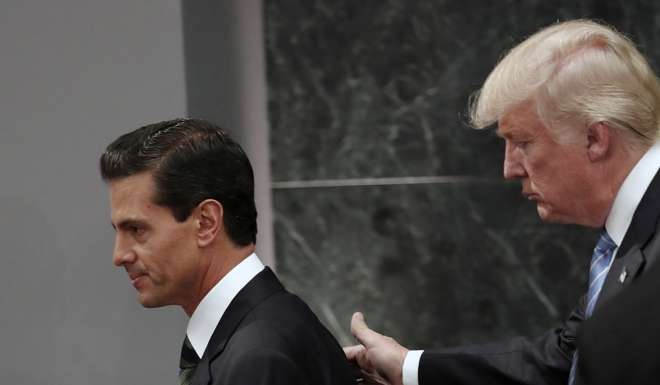
Why Trump’s hardball trade tactics shouldn’t worry China
While the US president’s heavy-handed strategies, which include ‘divide and rule’, may work with Mexico, there’s no reason they should faze Beijing
“We have to be unpredictable, and we have to be unpredictable starting now,” said Donald Trump in a speech on foreign policy in April 2016. But when it comes to trade, the new US president may well be following a line which, though it may appear haphazard, is actually a defined strategy.
A combination of divide and rule, the exploitation of leverage, and a preference for bilateral over multilateral trade agreements seem to characterise Trump’s approach on trade, though China might be immune to any such stratagems.
Divide and rule, and the exploitation of leverage, is arguably in evidence already in the manner that President Trump is approaching his concerns about the North American Free Trade Agreement (NAFTA) that comprises Canada, Mexico and the United States.
Trump is playing hardball with Mexico, seeking ways to make the latter pay for a new border wall on the US side of the frontier. Trump’s attitude was perhaps exemplified in a tweet last Friday: “Mexico has taken advantage of the US for long enough. Massive trade deficits & little help on the very weak border must change, NOW!”

While Trump will be seeking to renegotiate NAFTA, “Canada finds itself, frankly, in a really very special status,” said Stephen Schwarzman on January 23.
Schwarzman, the head of a business advisory council to Trump, added that Canada’s Prime Minister Justin Trudeau shouldn’t “be enormously worried because Canada is held in very high regard.”
Whether Trudeau found that comforting or patronising is unknowable.
At any rate the divide and rule strategy may already be bearing fruit. “We love our Mexican friends. But our national interests come first and the friendship comes second,” a Canadian government source told Reuters on January 24, while a second source said: “Mexico is being hung out of a skyscraper window by its feet.”
It’s the weakness of Mexico’s position that leaves it vulnerable to pressure from the Trump administration
But it’s the weakness of Mexico’s position that leaves it vulnerable to pressure from the Trump administration.
Firstly there is the fact that the vast majority of Mexico’s exports flow into the United States. There is also an argument that NAFTA has sheltered Mexico, to a large degree, from competition from China given that, as London-based Eurizon SLJ Capital wrote on Thursday, not only does Mexico “not produce goods or services that China consumes. Worse yet, it produces goods that are in direct competition with China.”
President Trump clearly believes he has leverage over Mexico and he’s quite prepared to use it and that shouldn’t be a surprise as Trump, in his business career, has always been fond of such an approach to dealmaking.
“Leverage is the biggest strength you have,” Trump wrote in his 1987 book The Art of the Deal, “Leverage is having something the other guy wants. Or better yet, needs. Or best of all simply can’t do without.”
As for a predisposition towards bilateral as opposed to multilateral trade deals, while Trump has withdrawn the United States from the Trans Pacific Partnership (TPP), the US President still hopes to make progress on, for example, a bilateral trade deal with Japan during Prime Minister Shinzo Abe’s visit to Washington in February.
President Trump can’t approach China on trade in the same way he has Mexico. In the China-US trade relationship, both countries can exercise leverage
There is an argument of course that securing a bilateral trade deal is easier than seeking common ground with a group of nations but equally there might be a school of thought that when a huge economy such as the United States is negotiating with a smaller one, then it is the former that has the upper hand.
One man’s fair trade agreement could easily prove to be another man’s unequal treaty, and no one in China needs reminding about those.
But even though Trump’s nominee for Commerce Secretary, Wilbur Ross, described China on January 18 as “the most protectionist country of the very large countries” which talks “more about free trade than they actually practice,” Beijing needn’t necessarily be overly concerned.
Trump can’t apply a divide and rule strategy to China because China isn’t party to any multilateral trade deal with the United States. Indeed, Washington’s shunning of the TPP may actually rebound to Beijing’s benefit with Australia already having mooted the possibility that China might itself come aboard.
Equally President Trump can’t approach China on trade in the same way he has Mexico. In the China-US trade relationship, both countries can exercise leverage.
There’s nothing that unpredictable about the Trump administration’s trade tactics, and they may work with some, but there’s no reason why they should faze China.

